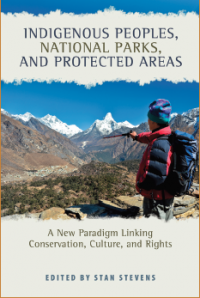Indigenous peoples, national parks, and protected areas : a new paradigm linking conservation, culture, and rights

A vast number of national parks and protected areas throughout the world have been established in the customary territories of indigenous peoples. In many cases these conservation areas have displaced indigenous peoples, undermining their cultures, livelihoods, and self-governance, while squandering opportunities to benefit from their knowledge, values and practices. This book makes the case for a paradigm shift in conservation from exclusionary, uninhabited national parks and wilderness areas to new kinds of protected areas that recognize indigenous people's conservation contributions and rights. It documents the beginnings of such a paradigm shift and issues a clarion call for transforming conservation in ways that could enhance the effectiveness of protected areas and benefit indigenous peoples in and near tens of thousands of protected areas worldwide.
Includes bibliographic references and index
Keywords:
Geographic keywords:
Broad subject:
Call number:
Record updated: 2021/02/01
